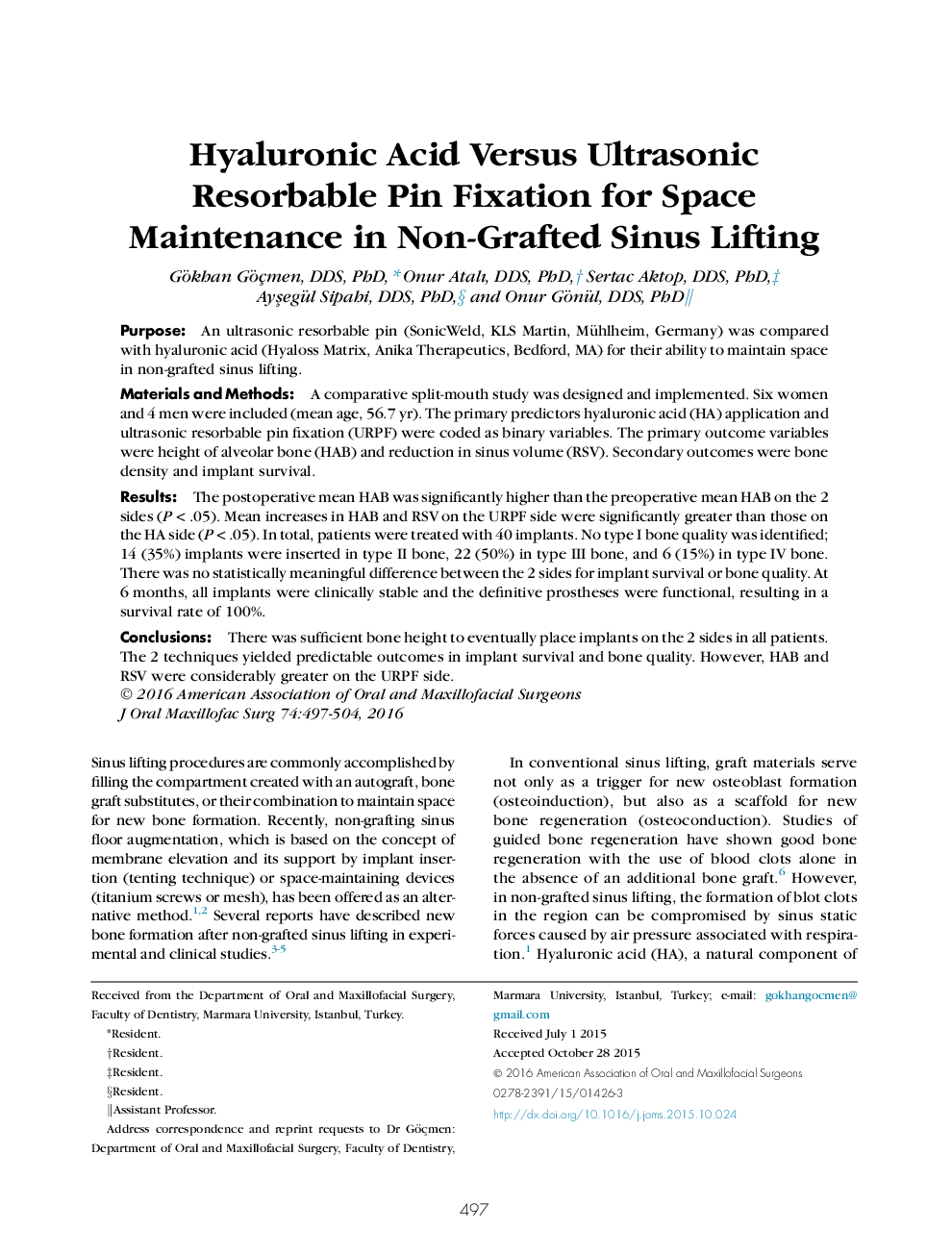| Article ID | Journal | Published Year | Pages | File Type |
|---|---|---|---|---|
| 3157641 | Journal of Oral and Maxillofacial Surgery | 2016 | 8 Pages |
PurposeAn ultrasonic resorbable pin (SonicWeld, KLS Martin, Mühlheim, Germany) was compared with hyaluronic acid (Hyaloss Matrix, Anika Therapeutics, Bedford, MA) for their ability to maintain space in non-grafted sinus lifting.Materials and MethodsA comparative split-mouth study was designed and implemented. Six women and 4 men were included (mean age, 56.7 yr). The primary predictors hyaluronic acid (HA) application and ultrasonic resorbable pin fixation (URPF) were coded as binary variables. The primary outcome variables were height of alveolar bone (HAB) and reduction in sinus volume (RSV). Secondary outcomes were bone density and implant survival.ResultsThe postoperative mean HAB was significantly higher than the preoperative mean HAB on the 2 sides (P < .05). Mean increases in HAB and RSV on the URPF side were significantly greater than those on the HA side (P < .05). In total, patients were treated with 40 implants. No type I bone quality was identified; 14 (35%) implants were inserted in type II bone, 22 (50%) in type III bone, and 6 (15%) in type IV bone. There was no statistically meaningful difference between the 2 sides for implant survival or bone quality. At 6 months, all implants were clinically stable and the definitive prostheses were functional, resulting in a survival rate of 100%.ConclusionsThere was sufficient bone height to eventually place implants on the 2 sides in all patients. The 2 techniques yielded predictable outcomes in implant survival and bone quality. However, HAB and RSV were considerably greater on the URPF side.
